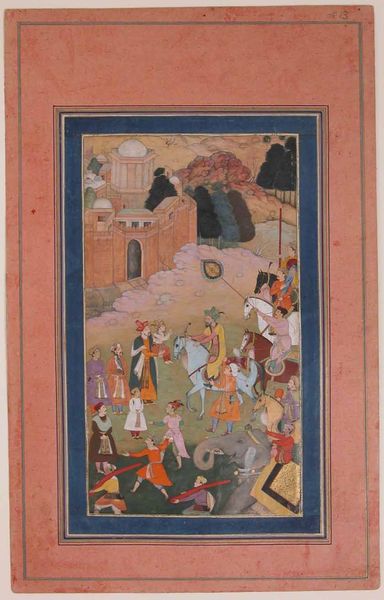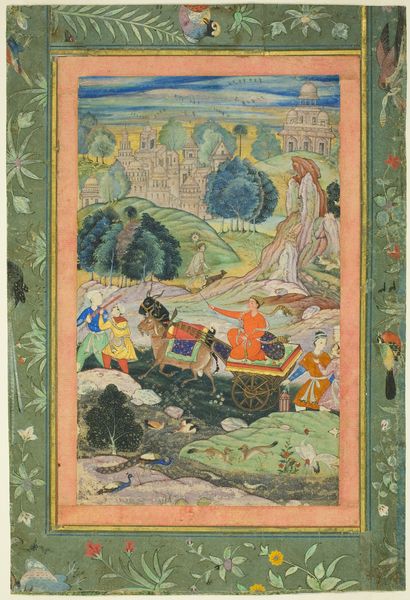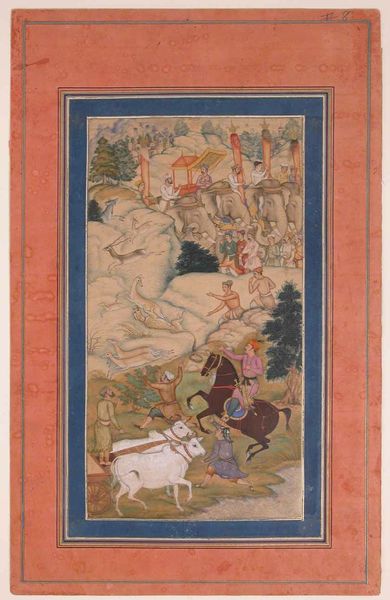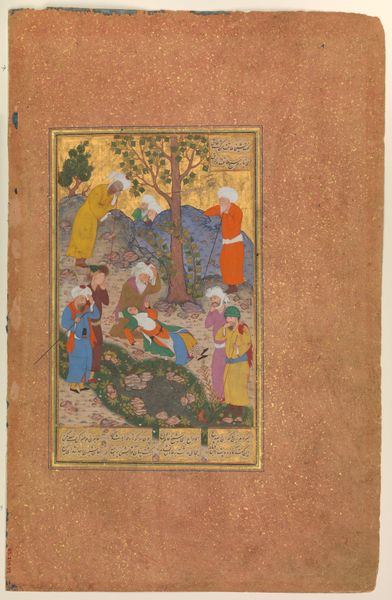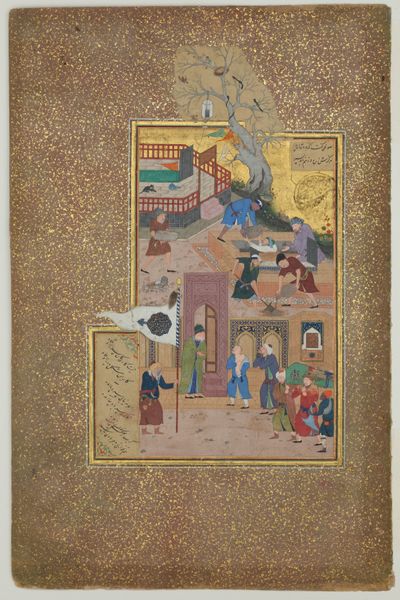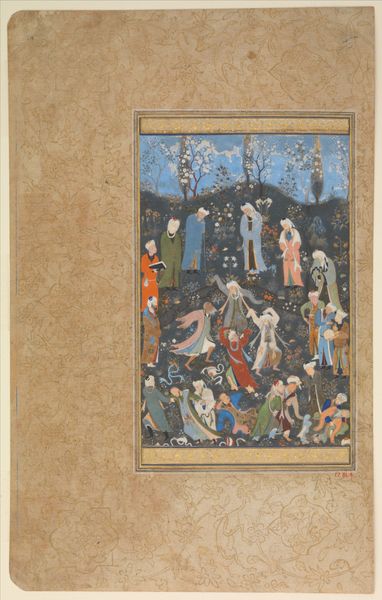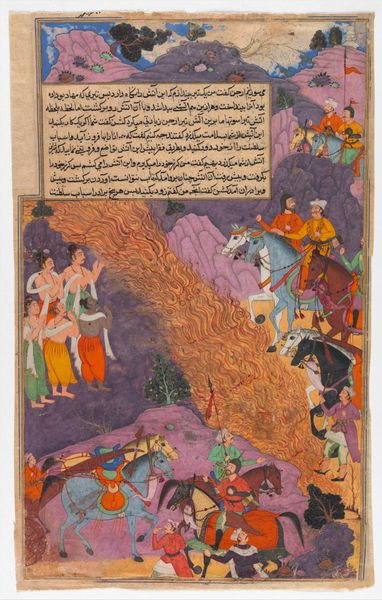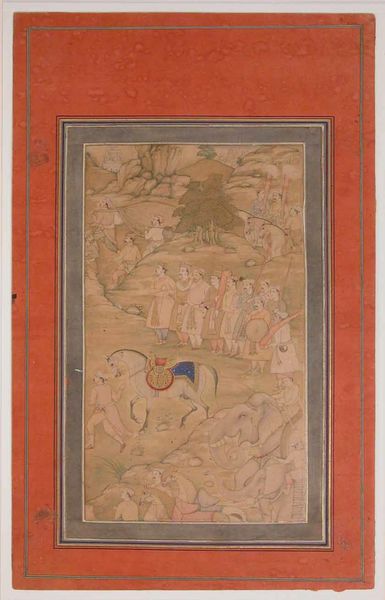
"A Bathhouse Keeper is Consumed by Passion for his Beloved", Folio from a Khamsa (Quintet) of Amir Khusrau Dihlavi 1572 - 1623
0:00
0:00
watercolor
#
water colours
#
narrative-art
#
landscape
#
figuration
#
watercolor
#
men
#
islamic-art
#
history-painting
#
miniature
Dimensions: Image: H. 10 in. (25.4 cm) W. 6 1/2 in. (16.5 cm) Page: H. 11 1/4 in. (28.6 cm) W. 7 7/8 in. (20 cm) Mat: H. 19 1/4 in. (48.9 cm) W. 14 1/4 in. (36.2 cm)
Copyright: Public Domain
Curator: Let’s take a closer look at "A Bathhouse Keeper is Consumed by Passion for his Beloved," a folio from a Khamsa of Amir Khusrau Dihlavi. It’s believed to have been created between 1572 and 1623. Editor: The riot of detail is immediately captivating. The color palette, the landscape framing the unfolding drama – it feels wonderfully intense. Curator: Indeed. The work exemplifies miniature painting traditions. We see watercolor employed meticulously, building up layers of detail to realize this narrative scene. It depicts, as the title suggests, a bathhouse keeper overwhelmed by longing. Consider, for example, how the figures, particularly those tending to the bath, reflect their labor in clothing appropriate for work in the hot bathhouse environment. Editor: What strikes me is how the composition guides the eye. The narrative unfolds in a complex, multi-layered composition, creating a sense of depth despite the inherent flatness of the medium. The arrangement of the figures leads to a focal point where heightened drama of "passion" is occurring. Curator: Absolutely. And notice the detailed architectural setting. It roots the figures within a socio-historical context. The buildings and open-air activity taking place in the background point toward communal daily activities. Editor: Thinking about production and the social aspect of it, this was a page created alongside many others to illustrate classical literature of its time, the "Khamsa." These hand-produced folios would circulate amongst a limited elite of the courtly circle. Curator: The materiality tells a complex story. Paper, pigment, and brush – all become vehicles for transporting classical literature into a vibrant, visually rich language understandable by elite audiences. Editor: It speaks to the formal language that governs Mughal miniature paintings, doesn't it? How these intrinsic elements communicate and transmit complex meanings and narratives. Curator: This approach underscores the connection between the arts, craftsmanship, and a courtly readership who were the ultimate patrons and consumers of such art. Editor: Well, I think we've unearthed a lot to ponder, haven’t we? Both in its immediate appeal and the layered ideas that informed its creation. Curator: A great example of art intersecting with historical circumstance and cultural narrative!
Comments
No comments
Be the first to comment and join the conversation on the ultimate creative platform.

